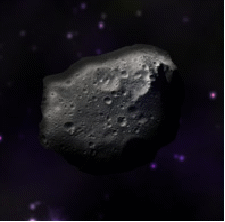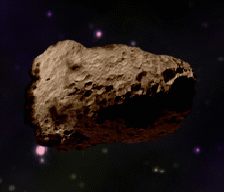Asteroids are lumps of metal or rock much smaller than a planet – from the size of a small stone up to 1000 km in diameter (Ceres). Most of the asteroids in the solar system are found in the asteroid belt between the orbits of Mars and Jupiter.
Astronomers classify asteroids according to the type of orbit they follow and by the amount of starlight they reflect. By studying the spectrum of colour from the reflected light astronomers can deduce the surface composition of asteroids. They can be classified as 3 broad types:
C-type asteroids. C-type asteroids carbon and complex organic (carbon containing) compounds. They are dark in colour and concentrated in the outer part of the main asteroid belt.

S-type asteroids. These are relatively bright and made up of silicate rocks with small amounts of iron. They are concentrated mainly in the inner region of the main steroid belt.

M-type asteroids. These have fairly bright surfaces and are rich in metals such as iron. They are found in the middle of the main asteroid belt.

The asteroids in the solar system are concentrated but not restricted to the main asteroid belt. Some move throughout the solar system, even coming close to the Earth. Asteroids that pass to within 45 million kilometres of Earth’s orbit - the Earth is about 150 million km from the Sun - are call Near Earth Asteroids. The orbit of some of the steroids cross Earth’s orbit and they could collide with the Earth in the future. The Earth is pock marked with impact craters caused by asteroids – asteroid impact may have been responsible for mass extinctions, including the extinction of the dinosaurs. Organisations exist to monitor near earth asteroids, to give warning of possible impacts.
